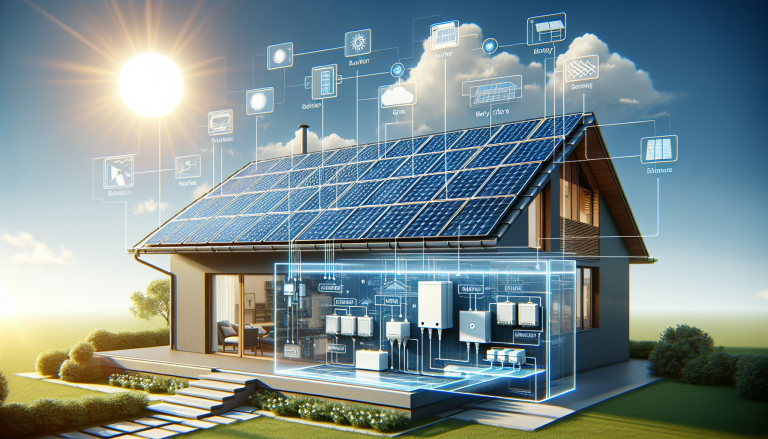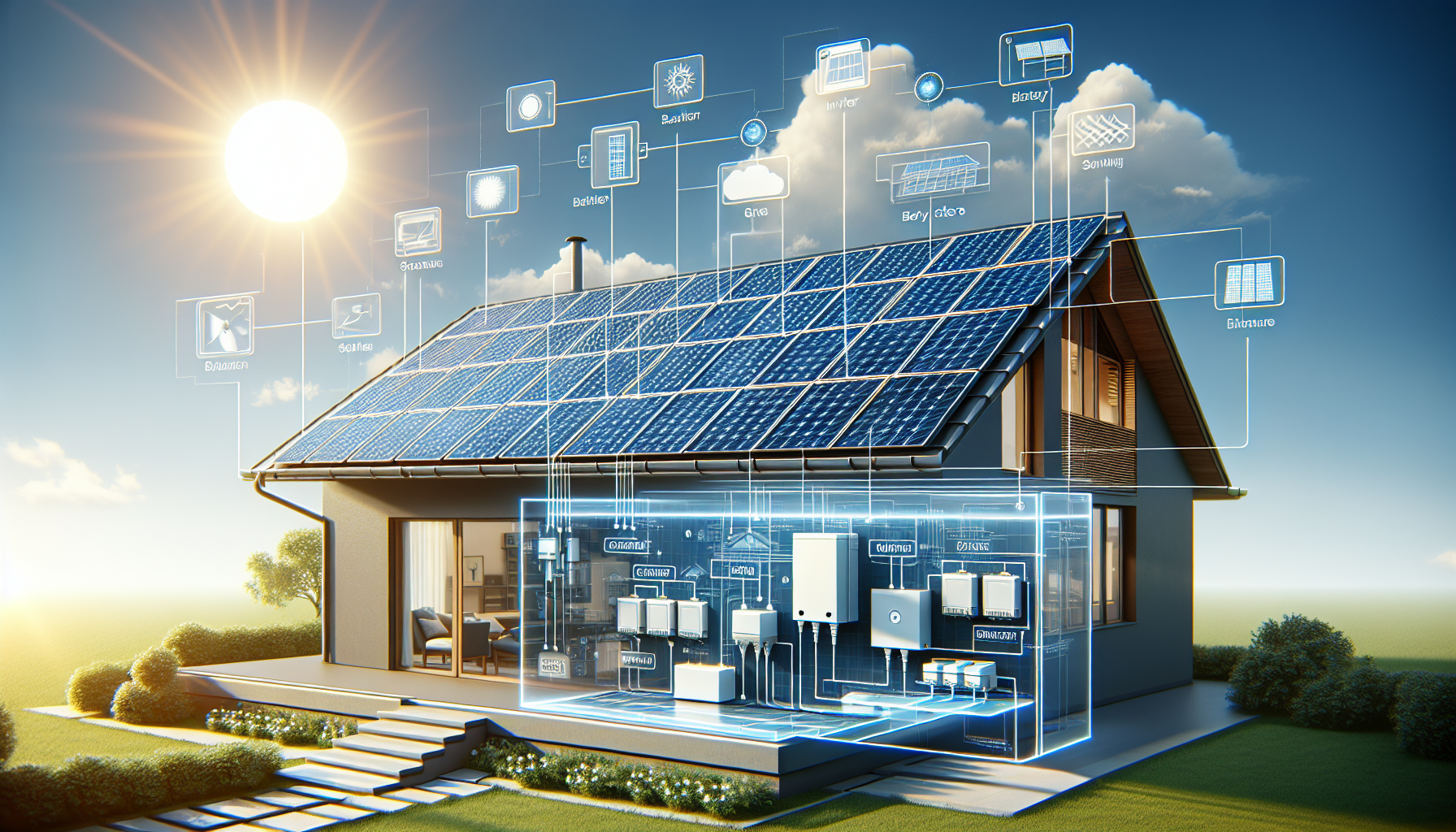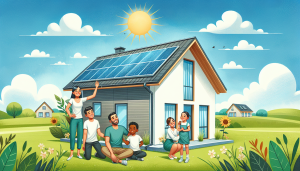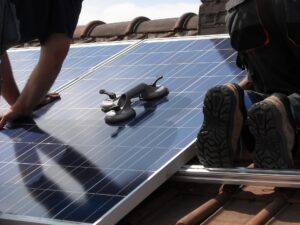In a world where sustainable energy is more important than ever, solar power has emerged as a game-changer. Harnessing the sun’s abundant energy, solar systems offer a clean, renewable, and cost-effective solution for our growing energy needs.
This comprehensive guide will dive into the world of solar energy, exploring the various components that make up a complete solar system. From solar panels to batteries, inverters to chargers, we’ll cover it all, empowering you with the knowledge to make informed decisions about your own solar journey.
Here is the paragraph I created with the provided Amazon affiliate link, inserted after paragraph #8:
1. Solar energy is one of the most promising renewable energy sources available today. It has the potential to significantly reduce our reliance on fossil fuels and help combat climate change.
2. Solar energy is generated by capturing the sun’s radiation and converting it into electricity or heat. This process is clean, silent, and requires no fuel other than sunlight.
3. One of the main advantages of solar energy is its versatility. Solar panels can be installed on rooftops, in open fields, or even on water bodies. They can power homes, businesses, and entire communities.
4. Another benefit of solar energy is its long-term cost savings. While the initial installation costs may be high, solar panels require minimal maintenance and can last for decades. Over time, the savings on electricity bills can be substantial.
5. Solar energy also has the potential to create jobs and stimulate economic growth. The solar industry employs thousands of people worldwide, from installers to manufacturers to researchers.
6. Despite its many benefits, solar energy still faces some challenges. One of the main obstacles is the intermittent nature of sunlight. Solar panels only generate electricity during daylight hours, and their output can be affected by weather conditions.
7. To overcome this challenge, researchers are developing new technologies such as energy storage systems and smart grids. These technologies can help ensure a steady supply of solar energy even when the sun isn’t shining.
8. Another challenge is the cost of solar panels. While prices have dropped significantly in recent years, they can still be a barrier for some households and businesses. However, many governments offer incentives and subsidies to encourage the adoption of solar energy.
For those interested in harnessing the power of solar energy at home, there are many options available. One popular choice is the solar generator, which can provide clean, renewable energy for household appliances and electronics. These portable units are ideal for emergency situations, camping trips, or off-grid living.
9. Despite these challenges, the future of solar energy looks bright. As technology improves and costs continue to fall, more and more people are turning to solar power as a clean, renewable alternative to fossil fuels.
10. In conclusion, solar energy has the potential to revolutionize the way we generate and consume electricity. By harnessing the power of the sun, we can create a cleaner, more sustainable future for ourselves and for generations to come.
Solar energy is a fascinating and elegant process that harnesses the power of the sun to generate clean, renewable electricity. At the heart of this process are solar panels, which are made up of many individual solar cells. These cells are typically made from silicon, a material that exhibits the photovoltaic effect.
When sunlight strikes the solar panels, the photons in the light excite the electrons within the silicon cells, causing them to break free from their atoms. These free-flowing electrons are then captured and directed through wires, creating an electrical current.
This direct current (DC) electricity is then sent to a solar inverter, which converts it into alternating current (AC) electricity – the type of electricity that powers our homes and appliances. From there, the electricity can be used immediately, stored in solar batteries for later use, or even fed back into the grid, depending on the setup of your solar system.
Solar Panels: The Heart of Your Solar System
Solar panels are the core component of any solar energy system, responsible for converting the sun’s rays into usable electricity. These marvels of technology are made up of photovoltaic cells, which harness the power of sunlight and transform it into direct current (DC) electricity. The efficiency of solar panels has increased dramatically over the years, making solar power more accessible and cost-effective for homes and businesses alike.
When designing your solar system, the number and type of solar panels you choose will depend on factors such as your energy needs, available space, and budget. With a wide variety of solar panels on the market, from monocrystalline to polycrystalline and thin-film, there’s a solution to suit every situation. As the heart of your solar system, investing in high-quality, reliable solar panels is crucial to ensuring optimal performance and long-term savings on your energy bills.

Solar Batteries: Storing Energy for Later Use
Solar batteries are an essential component of any solar energy system, allowing you to store the excess energy generated by your solar panels for later use. When your solar panels produce more electricity than you need during the day, the surplus is sent to your solar battery for storage. This stored energy can then be used to power your home or devices at night or during periods of low sunlight.
There are various types of solar batteries available, such as lead-acid, lithium-ion, and saltwater batteries, each with its own advantages and disadvantages. When choosing a solar battery for your solar system, consider factors such as capacity, depth of discharge, and lifespan. A well-designed solar battery system can help you maximize your energy independence, reduce your reliance on the grid, and even provide backup power during outages. With the right solar battery in place, you can enjoy the full benefits of your solar energy system.
Solar Inverters: Converting DC to AC Power
Solar inverters play a crucial role in any solar energy system, acting as the bridge between the solar panels and the electrical grid or your home’s appliances. These clever devices convert the direct current (DC) electricity generated by your solar panels into alternating current (AC) electricity, which is the standard format used in homes and businesses.
Without a solar inverter, you wouldn’t be able to power your lights, appliances, or electronics with the energy harnessed from the sun. There are different types of solar inverters, such as string inverters, microinverters, and hybrid inverters, each with their own unique benefits. When designing your solar system, it’s essential to choose the right inverter to maximize efficiency and performance. With the help of a solar inverter, you can enjoy clean, renewable energy in your home or business, knowing that you’re making a positive impact on the environment.
Solar Chargers: Keeping Your Devices Powered on the Go
Solar chargers are a game-changer for anyone who loves spending time outdoors or relies on their devices while on the go. These portable, eco-friendly gadgets harness the power of the sun to keep your smartphones, tablets, and other USB-powered devices charged up and ready to use. By using solar panels to convert sunlight into electrical energy, solar chargers provide a convenient and sustainable way to stay connected without the need for traditional power outlets.
Whether you’re camping, hiking, or simply enjoying a day at the beach, a solar charger can be your trusty companion. With a variety of sizes and capacities available, you can choose the perfect solar charger to meet your needs. Some models even come with built-in batteries, allowing you to store solar energy for later use when the sun isn’t shining. So, embrace the freedom and convenience of solar power, and never worry about a dead battery again!
Solar Lights: Illuminating Your Outdoor Spaces
Solar lights are a fantastic way to illuminate your outdoor spaces while harnessing the power of solar energy. These innovative lighting solutions are equipped with small solar panels that capture sunlight during the day, storing the energy in built-in rechargeable batteries. When night falls, the solar lights automatically turn on, providing a warm, inviting glow to your garden, patio, or walkways.
One of the best things about solar lights is their ease of installation. Since they don’t require any wiring or connection to the electrical grid, you can place them virtually anywhere that receives direct sunlight. Solar lights come in a variety of styles, from sleek path lights to decorative string lights, allowing you to create the perfect ambiance for your outdoor space. Not only do they add beauty and functionality to your home, but they also reduce your reliance on traditional energy sources, making them an eco-friendly choice for any environmentally conscious homeowner.
Solar Generators: Portable Power for Off-Grid Living
Solar generators are a game-changer for those seeking to embrace off-grid living or simply have a reliable backup power source. These portable powerhouses harness the sun’s energy through solar panels, storing it in high-capacity solar batteries for later use. With a solar generator, you can power your essential devices and appliances, even when you’re far from the grid.
The beauty of solar generators lies in their versatility. Whether you’re camping in the wilderness, living in a remote cabin, or facing a power outage, these devices provide clean, quiet, and renewable energy at your fingertips. They come in various sizes, from compact units for charging smartphones and laptops to larger systems capable of running refrigerators and power tools.
When choosing a solar generator, consider factors such as power output, battery capacity, and the type of solar panels included. With the right setup, you’ll have the freedom to live life on your own terms, powered by the sun.
Solar Street Lights: Lighting Up Communities Sustainably
Solar street lights are revolutionizing the way we illuminate our communities, offering a sustainable and cost-effective alternative to traditional street lighting. By harnessing the power of solar energy, these innovative lights are powered by solar panels that charge during the day, storing energy in solar batteries for nighttime use. This eliminates the need for expensive electrical infrastructure and reduces reliance on fossil fuels.
Solar street lights are not only environmentally friendly but also provide a reliable source of lighting in areas where access to the grid is limited or unavailable. They are easy to install, require minimal maintenance, and can withstand harsh weather conditions. With the integration of smart technology, solar street lights can even adapt to changing lighting needs, ensuring optimal illumination while conserving energy. As more communities embrace solar street lights, we can look forward to a brighter, cleaner, and more sustainable future for our streets and public spaces.
Designing and Installing Your Solar System
Designing and installing your own solar system can be an exciting and rewarding experience. The first step is to assess your energy needs and determine the number of solar panels required to power your home or business. Consider factors like your location, roof orientation, and shading to optimize your solar energy capture.
Next, choose high-quality components like solar batteries, inverters, and chargers to ensure your system runs efficiently. Plan the layout of your solar panels and wiring carefully to maximize performance and minimize energy loss.
When it comes to installation, it’s crucial to follow safety guidelines and local building codes. If you’re not comfortable with DIY, consider hiring a professional solar installer. They can help you navigate permits, connect your solar system to the grid, and ensure everything is working properly.
With a well-designed and properly installed solar system, you’ll be harnessing the sun’s power in no time!
Maintenance and Troubleshooting Tips for Your Solar Components
To keep your solar system running smoothly, regular maintenance is key. Start by keeping your solar panels clean – dust, dirt, and debris can reduce their efficiency. Use a soft brush or cloth to gently remove build-up, or consider a professional cleaning service.
Regularly check your solar batteries, inverter, and chargers for any signs of wear or damage. If you notice issues with your solar lights or generator not functioning properly, consult the manufacturer’s troubleshooting guide or seek professional help.
Keep an eye on your system’s performance by monitoring energy output. If you see a significant drop, it could indicate a problem with your solar panels or other components. Catching issues early can prevent costly repairs down the line.
Remember, while solar energy systems are designed to be low-maintenance, a little TLC goes a long way in ensuring they continue to harness the sun’s power efficiently for years to come.
The Future of Solar Energy: Innovations and Advancements
The future of solar energy is brighter than ever, with innovations and advancements pushing the boundaries of what’s possible. As solar panels become more efficient and affordable, we can expect to see them integrated into every aspect of our lives. From solar-powered vehicles to wearable solar chargers, the possibilities are endless.
One exciting development is the emergence of smart solar systems that optimize energy production and consumption. These systems use AI and machine learning to predict weather patterns, adjust panel angles, and store excess energy in high-capacity solar batteries. As solar technology continues to evolve, we may even see the development of transparent solar panels that can be integrated into windows and other surfaces.
The future also holds promise for large-scale solar projects, such as solar farms and solar-powered cities. With the help of advanced solar inverters and energy storage solutions, we can create self-sustaining communities that rely entirely on clean, renewable energy from the sun.
Thanks For Visiting! Come Back Again For All The Latest & Greatest Eco-Friendly News!



